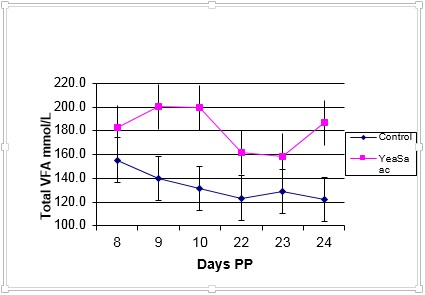As we approach midsummer, there is a lot of discussion among dairy farmers surrounding low butterfat levels in milk.
While a decline in butterfat percentages are a common occurrence during spring months when cows are grazing lush grass, this issue can continue through the summer months.
Reduced butterfat levels are an even bigger issue in this post quota era, as there is no penalty for over producing butterfat, however, increasing levels of butterfat should not be at the expense of milk protein.
Contributing factors
Butterfat production can be compromised when rapidly digestible grass is consumed. Butterfat is derived from acetate which is produced when bacteria breaks down fibre, but because rapidly digestible grass has low effective fibre it produces little acetate and as a result hinders butterfat production.
This can also cause rumen pH to drop leading to sub-acute rumen acidosis (SARA). Low rumen pH can cause damage to the lining of the cow’s rumen which in turn can have a negative effect on both feed intake and feed digestion leading to depressed milk production and a negative impact on health as well as fertility.
Low milk fat can be a sign of cows suffering from SARA.
Improving butterfat levels
Yea-Sacc from Alltech is a specialist active strain of live yeast with specific rumen activity, with more than 100 controlled animal performance research trials backing its development.
Yea-Sacc is a live yeast product that works by metabolising excess oxygen. Adding Yea-Sacc to your feed can help maintain optimum rumen pH and prevent SARA by boosting the bacteria responsible for fibre digestion and therefore improving butterfat percentage.
Trial work carried out with Yea-Sacc at University College Dublin (UCD) Lyons farm highlighted the ability of Yea-Sacc to significantly increase rumen pH on grass based systems throughout the day when compared to cows that did not receive Yea-Sacc (figure 1).
Figure 1. Effect of Yea-Sacc supplementation on rumen pH (p=0.0037)

The UCD trial work also demonstrated that cows fed with Yea-Sacc had significantly higher volatile fatty acids (VFA) levels (figure 2).
VFA production is a measure of energy coming from rumen fermentation. Therefore, cows fed Yea-Sacc produced more energy from their feed and mobilised less body reserves.
Correct body condition score (BCS) is additionally very important for butterfat production. Cows that are under-conditioned will use body fat to drive milk volume and the milk butterfat in turn will be reduced, not to mention the numerous health implications.
Figure 2. Effect of Yea-Sacc supplementation on rumen VFA

Other nutritional factors
- Follow a good grassland management plan – don’t allow the cow pick and choose what she eats as she is more likely to only eat the leaf which is high in sugar content.
- Feeding approximately 1-2 kg of structural fibre (straw/hay/silage) will enhance rumination.
Choose a concentrate with a high level of digestible fibre, for example beet pulp. - Do not feed mouldy feed/forages which may be a sign of mycotoxins which can kill rumen bacteria and inhibit fibre digestion, resulting in lower acetate production and therefore lowering butterfat levels.
Sarah Maher, Technical Adviser with Alltech. In association with Alltech.
